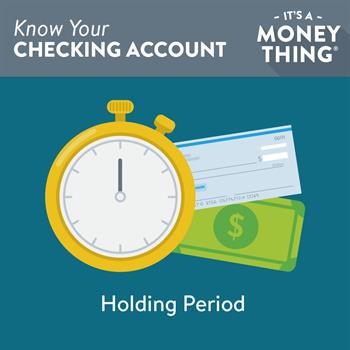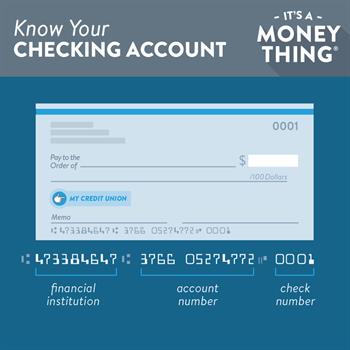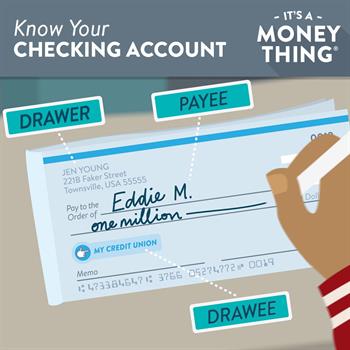It's a Money Thing®
Are Checks Obsolete?
Checks hold an odd place in our personal finances. In many ways, checks seem like relics from a previous era. We maybe write one or two checks a month (usually for rent or similar bill-paying situations where electronic payment simply isn’t an option). This is vastly different from only a few decades ago, when checks represented more than 85% of all non-cash retail payments. (Can you imagine whipping out a checkbook in line at the grocery store? Times have certainly changed!)
However, despite their gradual decline in use, checks haven’t become completely extinct. We still keep our money in checking accounts, we still balance our checkbooks, and new banking technologies (mobile check imaging is one example) are being introduced to improve the process of paying by check. Writing checks continues to walk the line between permanence and obsolescence.
Whether or not checks are on their way out, there are still a couple of check-related best practices that you need to be aware of in order to stay on top of your finances.
Holding periods exist, and you need to keep track of them.
Checks often get a bad rap for the amount of time they take to clear. This is referred to as a holding period, and it can vary anywhere from a day to over a week, depending on your financial institution.
The clearing process itself is made up of several steps. First, the financial institution that receives the check for deposit encodes its dollar amount into the machine-readable numbers along the bottom of the check. Then the physical check is fed through a machine that scans its data. That data is then sent to a clearinghouse, which forwards the information to the financial institution that issued the check. The financial institution makes sure the check-writer’s account has sufficient funds to make the payment—if it does, the transaction goes through, but if the account has insufficient funds to complete the transaction, the check bounces.

The introduction of mobile check imaging (also known as remote deposit capture) and other technologies is helping to shorten the holding period; however, to avoid fees, bad checks and other sticky situations, it’s still important for you to understand what the holding period is at your credit union or bank.

Know the important information on each of your checks.
Each check contains some valuable financial information, including:
- Your financial institution's routing number
- Your checking account number
- The check number
The routing number, or ABA number, is a nine-digit code that's used to identify your financial institution. It's the first set of numbers printed on the bottom of your checks, on the left side.
Your account number is the second set of numbers following the routing number. This is your checking account number. All of the numbers printed across the bottom of your checks are printed in a special magnetic ink that banking machines can read.
Know how to properly fill out your check.
To complete your check, you will be required to fill in several fields.
- Date: The date which you are writing the check
- Payee: The name of the person or company you are going to give the check to
- Amount of check in numerals: Enter the amount of the check, in numbers. Don't leave any space at the front of the line where someone could add in extra numbers.
- Amount of the check in words: Enter the amount of the check in words. Again, don't leave any space at the front of the line and draw a line to the end of the line so that no one can add information to the check fraudulently.
- Memo: Use this space to note why you wrote the check.
- Signature: Sign your check. Your signature is what makes the check active.

Balancing a checkbook is still an important skill.
The best way to avoid tricky scenarios created by holding periods is to keep track of your transactions with a checkbook register. Traditionally, checkbook registers are those lined notebooks that come with your checks, but you can use any system that works for you, whether that’s a printable form, a digital spreadsheet or even an app on your phone.
Since we are not yet a totally digital society, understanding how to use paper checks as well as keeping track of all of your transactions will keep your checking account in the black and your financial matters running smoothly.

